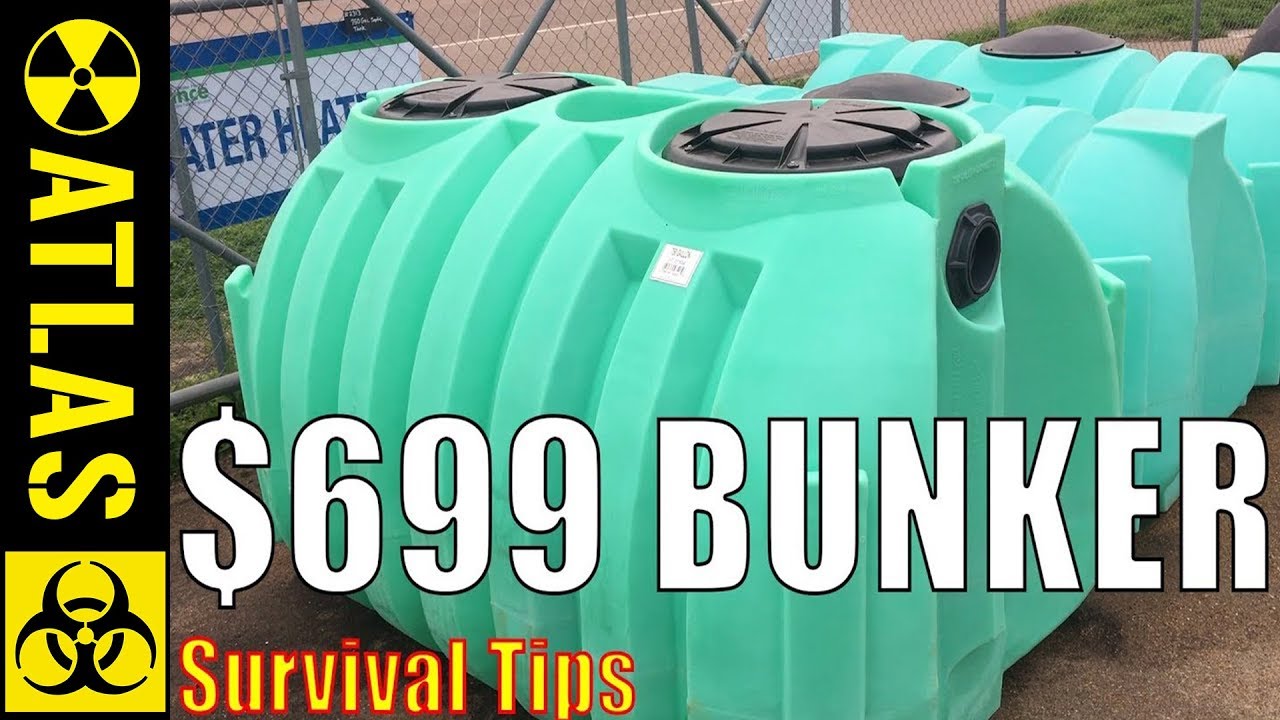How To Create a Watertight Underground Bunker & Food Cache for $699

Underground Bunker
Ron gives great tips on how to bury your survival food or yourself for a low budget this is the beginning of our do-it-yourself tip series.
What kind of food and water should be stocked in the underground bunker and how much is needed to last for 3 months?
In today’s world, being prepared for emergencies and disasters is of utmost importance. Creating a watertight underground bunker and food cache can provide a safe haven in times of crises. The following article will provide a comprehensive guide on how to create a watertight underground bunker and food cache for $699.
Step 1: Choose an appropriate site
The first step in creating a watertight underground bunker and food cache is to choose an appropriate site. The site should be dry and free from flooding. Choose a location that is away from the main house and easily accessible. Consider factors such as potential threats, ease of access, and availability of resources.
Step 2: Excavate and prepare the site
Once you have selected an appropriate site, the next step is to excavate and prepare the site. Excavate the site to a depth of at least 5 feet to allow for adequate headroom. Use a backhoe or hire professionals to do the job. Ensure the walls are vertical and smooth. Use concrete blocks to reinforce the walls and floor.
Step 3: Install the door and ventilation
The door is an essential component of the underground bunker. Install a watertight door that has a secure locking mechanism. This will provide safety and also prevent potential intruders from gaining access to the bunker. Install ventilation pipes to ensure adequate airflow. Poor airflow can lead to the accumulation of harmful gases, which can be detrimental to health.
Step 4: Water proofing and insulation
To create a watertight bunker, it is crucial to use waterproofing materials. The walls and floor need to be water-resistant to prevent any water leaks. Use a waterproofing membrane on the walls and floor. This will provide adequate protection against water penetration. Use insulation material to regulate the temperature and prevent heat loss.
Step 5: Stock the bunker with food and water
A food cache is an essential component of an underground bunker. Store enough food and water to last for at least 3 months. Store non-perishable food such as canned goods, dried fruits, and vegetables. Use airtight containers to prevent contamination. Ensure there is enough water stored to last for the duration of the stay.
In conclusion, creating a watertight underground bunker and food cache is an important step towards preparedness for emergencies and disasters. The above guide provides a comprehensive methodology on how to create an underground bunker with an average budget of $699. It is essential to prioritize safety, security, and comfort when designing a bunker. Ensure that the underground bunker meets all the necessary safety and building codes for your area. By following these simple steps, you can create a safe haven for yourself and your loved ones during times of crises.









Musician’s Incredible Modern Tiny House & Mobile Music Studio
Flying Foxes Vs Freshwater Crocodile | Lands of the Monsoon
Cyclops and Ghost Sharks | Most Bizarre Sharks Of The Midnight Zone
The Extraordinary Case of Alex Lewis
5 Craziest Things I’ve Found In Dead Bodies